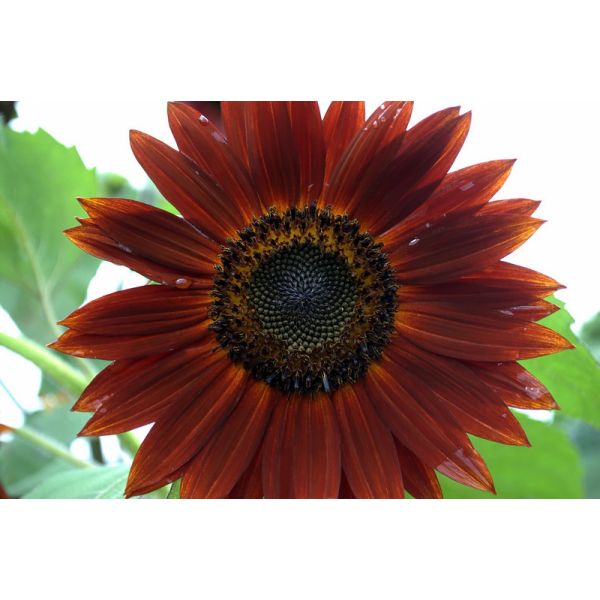Helianthus Chocolate Seeds (Sunflower Seeds, Velvet Queen)
Helianthus Chocolate Seeds (Sunflower Seeds, Velvet Queen)
Spectacular ! These sunflower plants are free branching, bearing lots of 5-6 inch blooms, with distinct and attractive foliage.

Delivery
All orders shipped with UPS Express.
Always free shipping for orders over US $250.
All orders are shipped with a UPS tracking number.
Returns
Items returned within 14 days of their original shipment date in same as new condition will be eligible for a full refund or store credit.
Refunds will be charged back to the original form of payment used for purchase.
Customer is responsible for shipping charges when making returns and shipping/handling fees of original purchase is non-refundable.
All sale items are final purchases.
Help
Give us a shout if you have any other questions and/or concerns.
Email: [email protected]
Phone: +1 (23) 456 789
Availability: In stock
SKU
Helianthus Chocolat
Helianthus chocolate or Velvet Queen Sunflower is one of the darkest of all sunflowers. This is an exquisite sunflower, with a gorgeous metallic sheen to the bloom. These sunflower plants are free branching, bearing lots of 5-6 inch blooms, with distinct and attractive foliage.
The velvety flowers measure 4-6 in (10-12 cm) across and are a rich brown on the tops of the petals and a lovely, striped yellow on the undersides. They are a magnificent dark-flowered variety in deep shades of chestnut red, burgundy, mahogany, and bronze with dark chocolate centers.
The main stems will grow up to 4-6 ft (1.2-1.8m) tall and they will produce multiple side-shoots with lots of blooms. The helianthus chocolate is one of the earliest sunflowers to blood around mid-late summer. The flowers are not only beautiful, they also are edible!
Hardiness zones :
3-9, (-37c/-35f, -5c/25f). Helianthus chocolate prefers a well-drained soil and full sun. The mid-height habit of this gem makes the Chocolate sunflower the ideal addition to your borders this summer. The Velvet sunflowers strong stem makes them ideal for an excellent cutting sunflower that keeps its intense velvet burgundy color in the summer sun.
| Common name | Sunflower |
|---|---|
| Species | Helianthus annuus |
| Cultivar | Velvet Queen |
| Germination | If growing sunflowers from seed indoors ahead of time, use peat pots, which are ideal for plants like sunflowers that don't like to be transplanted. Sow two seeds per pot and cover them with plastic to keep them moist. Place them under grow lights, or a sunny windowsill, or a greenhouse. Once seeds germinate (10 to 14 days), pinch out weakest plant, so you have one per pot. Give seedlings bright light and water and fertilize regularly. In mid-May, harden off your sunflowers. Plant the young plants into your garden, pot and all (the roots will grow through the peat) after all chance of frost is over. Alternatively, you can sow the seeds thinly outside, « in deep about 12 in apart, in a well cultivated soil, after the danger of frost has passed. Once the plants are about six inches tall, thin them to 2 to 4 ft apart, to give individuals space to spread. Notes: What is usually called the flower is actually a head (formally composite flower) of numerous flowers (florets) crowded together. The outer flowers are the ray florets and can be yellow, maroon, orange, or other colors, and are sterile. The florets inside the circular head are called disc florets. The disc florets mature into what are traditionally called "sunflower seeds", but are actually the fruit (an achene) of the plant. The true seeds are encased in an inedible husk. Sunflowers in the bud stage exhibit heliotropism. At sunrise, the faces of most sunflowers are turned towards the east. Over the course of the day, they move to track the sun from east to west, while at night they return to an eastward orientation. This motion is performed by motor cells in the pulvinus, a flexible segment of the stem just below the bud. As the bud stage ends, the stem stiffens and the blooming stage is reached. Now the stem is frozen, typically in an eastward orientation. The stem and leaves lose their green color. The wild sunflower typically does not turn toward the sun; its flowering heads may face many directions when mature. However, the leaves typically exhibit some heliotropism. |
| Price View | Price Range |

